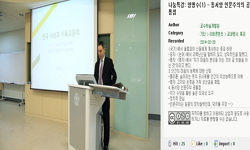본 연구는 일본과 한국에서 기독교의 수용과 발전에 대조적 유형이 존재하는 것에 주목하여 이 두 이웃 나라에서 개신교와 일반 대중의 종교성을 비교함으로써 동아시아의 ‘종교성’ 논의...
http://chineseinput.net/에서 pinyin(병음)방식으로 중국어를 변환할 수 있습니다.
변환된 중국어를 복사하여 사용하시면 됩니다.
- 中文 을 입력하시려면 zhongwen을 입력하시고 space를누르시면됩니다.
- 北京 을 입력하시려면 beijing을 입력하시고 space를 누르시면 됩니다.
https://www.riss.kr/link?id=A105380844
- 저자
- 발행기관
- 학술지명
- 권호사항
-
발행연도
2018
-
작성언어
English
-
주제어
Christianity ; Elite Religiosity ; Mass Religiosity ; Korea ; Japan ; Modernization ; Secularization ; Folk Religion ; 기독교 ; 엘리트 종교성 ; 대중 종교성 ; 한국 ; 일본 ; 근대화 ; 세속화 ; 민속 종교
-
등재정보
KCI등재
-
자료형태
학술저널
-
수록면
11-42(32쪽)
- 제공처
-
0
상세조회 -
0
다운로드
부가정보
국문 초록 (Abstract)
본 연구는 일본과 한국에서 기독교의 수용과 발전에 대조적 유형이 존재하는 것에 주목하여 이 두 이웃 나라에서 개신교와 일반 대중의 종교성을 비교함으로써 동아시아의 ‘종교성’ 논의에 기여하고자 한다. 한국의 경우 근대화의 정신과 개신교 양자가 결합한 것이 중상층(‘엘리트 종교성’)에게 매력을 준 반면에, 고대로부터 내려오는 한국적 종교성(무속신앙)과 오순절 성령운동 기독교의 결합은 중하층(‘대중 종교성’)에게 한층 매력적인 것이었다. 보수적 개신교(장로교 혹은 순복음교단)와 무속신앙(민속 종교의 실천) 양자의 관계가 자연스러운 한국에서 신약성서의 축사(귀신쫓기)와 치병의 행위를 강조하는 기독교의 성령운동적 형태가 괄목할 만한 성장을 이루었다. 이와 대조적으로 일본의 경우 민속 종교와 무속신앙을 믿는 일반 대중은 천리교, 금광교, 창가학회 같은 이른바 ‘신종교’에 이끌렸다. 특히 1960년 이래 이 신종교들은 치병은 물론 가난에 대한 해결 방안을 제공하였다. 일본의 상황에서 기독교는 사무라이(무사) 계급을 주로 개종시켰는데, 이들은 여전히 유교적 에토스(‘엘리트 종교성’)를 놓지 않았다. 이로부터 기독교는 주로 일본 사회의 교육받은 ‘상류’ 계층의 사람들로부터만 계속적인 지지를 받고 있다.
다국어 초록 (Multilingual Abstract)
Considering the contrasting pattern of the acceptance and development of Christianity in Korea and Japan, the present study aims to compare Protestant Christianity and people’s religiosity in these two neighboring countries, and shed some light on t...
Considering the contrasting pattern of the acceptance and development of Christianity in Korea and Japan, the present study aims to compare Protestant Christianity and people’s religiosity in these two neighboring countries, and shed some light on the current debate on religiosity in East Asia. In Korea, where the relationship between conservative Protestantism (Presbyterian or Pentecostal) and shamanism (folk religious practice) is perfectly natural, Pentecostal forms of Christianity that emphasize the New Testament’s practice of exorcism and healing made considerable advances. Contrarily, in Japan, ordinary believers of folk religion and shamanism (“mass religiosity”) went to join the so-called ‘new salvation religions,’ such as Tenrikyo, Konkokyo and Soka Gakkai, which offered solutions to poverty, as well as healing in the 1960s.
목차 (Table of Contents)
- Abstract
- I. Introduction
- II. Protestant Christianity and FolkReligiosity in Japan
- III. Protestant Christianity and FolkReligiosity in Korea
- IV. Conclusion
- Abstract
- I. Introduction
- II. Protestant Christianity and FolkReligiosity in Japan
- III. Protestant Christianity and FolkReligiosity in Korea
- IV. Conclusion
- 한글초록
- Bibliography
동일학술지(권/호) 다른 논문
-
- 한국선교신학회
- 김은수
- 2018
- KCI등재
-
Revival and Church Growth: A Case Study on the Early Korean Revival
- 한국선교신학회
- Chil-Sung Kim
- 2018
- KCI등재
-
카자흐민족의 민간신앙의 세계관 이해를 통한 변혁적 선교
- 한국선교신학회
- 남성택
- 2018
- KCI등재
-
수평이동을 극복하는 재생산을 통한 회심전도 :교회론적 원인 분석과 대안
- 한국선교신학회
- 남성혁
- 2018
- KCI등재






 코리아스칼라
코리아스칼라






